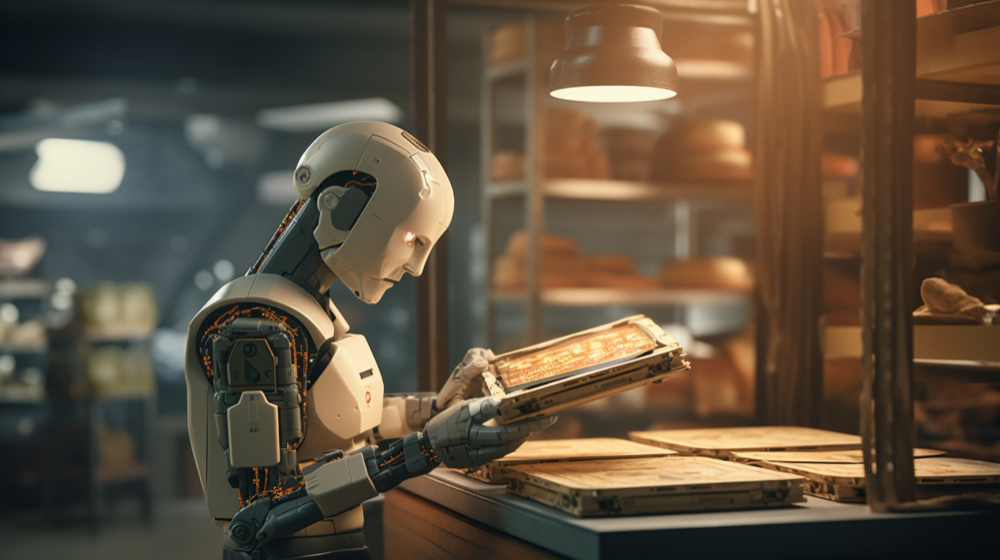
Development of Robots Capable of Seeing Through Walls and Smoke
How the PanoRadar Developed at the University of Pennsylvania Works
A group of researchers at the University of Pennsylvania has created a robot called PanoRadar, which uses several systems to enable it to “see” through walls.
Work is already underway to ensure that, at some point in the future, robots will have superhuman vision, allowing them to see through walls, smoke, glass, fog, and heavy rain, among other things.
This is the goal of a group of researchers at the University of Pennsylvania, United States, relying on a system called PanoRadar, which converts radio waves into detailed three-dimensional views. In this way, robots will have the ability to move precisely in situations such as search and rescue missions, where conventional sensors are ineffective.
The inspiration for this invention:
Generally, sensors, radars, and similar developments rely on light to visualize what is in front of them. However, nature offers examples that vision does not have to be limited by light. For instance, sharks detect electric fields generated by the movement of their prey, while bats use echoes of sound waves to navigate.
Beyond human vision, radio waves can pass through some materials and penetrate smoke or fog more effectively than light waves, due to their significantly longer wavelength.
3D Vision Using Radio Waves:
PanoRadar is a new technology designed to solve this problem by converting basic radio waves into detailed three-dimensional images of the surroundings, providing robots with superhuman vision.
The PanoRadar sensor works similarly to a lighthouse, scanning the entire horizon by sweeping its beam in circles. The system consists of a rotating vertical array of antennas that explore the environment. These antennas emit radio waves and listen to their reflections in the environment, like a lighthouse detecting ships and coastal landmarks. However, thanks to the incorporated artificial intelligence (AI), PanoRadar surpasses this basic scanning technique, as it is able to intelligently combine measurements from all rotation angles to improve image resolution.
This rotation technique produces a dense network of virtual measurement points, allowing PanoRadar to achieve image resolution comparable to LiDAR, even though the sensor itself costs only a fraction of traditional LiDAR systems. LiDARs, laser radars, are used, for example, in autonomous cars.
“While PanoRadar and LiDAR share the same goal, which is to detect the presence and volume of distant objects, each works in a very different way, and with equally different results,” explains David Soto Sedano, Offer Global Director Healthcare & Insurance at IT solutions provider Softtek. He elaborates: “LiDAR is widespread, to the point that we can find it in iPhones; it uses laser points and can be found implemented in tolls, mapping and topography projects, among others. PanoRadar, on the other hand, uses radio waves to create high-resolution three-dimensional images of the environment. This technology has the potential to revolutionize robotic perception by being able to ‘see’ through smoke, fog, and reflective surfaces such as glass, thus overcoming some of LiDAR’s limitations.”
The executive points out that PanoRadar and LiDAR have complementary strengths, “so it is likely that both technologies will coexist and be used depending on the specific requirements of each application.”
According to international press coverage, one of the most difficult milestones for researchers to overcome was developing the algorithms for PanoRadar, capable of maintaining high-resolution images even when the robot is in motion.
“Another challenge was teaching the system to interpret complex indoor environments,” commented one of the researchers, explaining that they overcame this issue by training the AI to recognize patterns in radar signals, similar to human perception.
When asked about this development, Lucas Jagodnik, CEO of the Argentine robotics firm Apelie Robotics, commented: “AI is already making its way into robotics. In this case, it’s the combination of radio frequencies and trained models that allows for an advanced perception of the environment.” According to this executive, who moved a few months ago to Atlanta, United States—where the headquarters of his robotics startup is located—“there are technologies like laser sensing or LiDAR, or vision through cameras, but they can fail either because certain surfaces may reflect more than they should, which can happen with lasers, while cameras also face challenges such as fog, smoke, and darkness, and are therefore also limited.”
The interviewee mentions that Apelie Robotics is working with technologies similar to those used in radars. “In Canada, specifically, we have robots in poultry pens that help calm the birds, stimulate them, and measure their mental conditions. Farmers are truly delighted because our robot allows them to reduce hours of work in the pens. There is a shortage of labor, so it’s vital. Additionally, we are developing an AI-powered farmer,” he reveals.
Other Use Cases: Autonomous Vehicles and Healthcare
Jagodnik mentions that this technology allows for vision when the human eye and traditional sensors cannot. “This opens up an impressive range of applications, from autonomous vehicles and precision agriculture to security and defense situations,” he says, and elaborates: “These radars aren’t new technology, but what’s revolutionary is how we combine a multitude of data with radars through AI to enhance perception and prediction,” he maintains.
For his part, Soto Sedano states that the healthcare sector could be one of the most impacted. “PanoRadar could be used to monitor patients’ vital signs and movements without the need for sensors attached to the body, which would be especially useful in intensive care units or for patients with reduced mobility. And if we consider what’s already being done with Da Vinci robots, this could further increase efficiency, as the enhanced vision it provides could help surgeons perform more precise procedures, especially in conditions with limited visibility.”
Similarly, in nursing homes or rehabilitation centers, PanoRadar could detect falls or abnormal patient movements, enabling a faster response from medical staff.
And if we turn to industries, in construction and civil engineering, this technology could be used for structural inspections and 3D site mapping. “In the manufacturing industry, it would improve automated quality control and robot navigation in factories. Additionally, in the security and surveillance sector, it could provide 360-degree coverage with obstacle-penetrating detection capabilities—ideal for airports, military facilities, and commercial buildings,” adds the Softtek executive.
Looking Ahead:
The interviewees believe that this development is just one example of the power of AI. “I think we’re living in fascinating times because these applications are reaching the hands of creative people or individuals with specific problems that they know can be solved with this technology. I even think we’re close to the tipping point where we’ll start discovering millions of uses,” explains Jagodnik, who believes that in five years we’ll see a world entirely different from what we know today.
This executive believes that AI-assisted applications will emerge the fastest: “I believe that within five to ten years we will already have robots actively participating in our society, in our homes. We’re at the beginning, but it’s a fascinating path, and I think it’s being very well received by our clients. And most notably, I believe all of this is being designed, conceived, and built by young Argentinians—people who may have never imagined they could develop robots from Argentina for the world.”
Soto Sedano, for his part, believes that PanoRadar technology could be commercially available in about 3–5 years. “Although the prototype is already functioning and the results are promising, there’s still a way to go, and the technology needs more real-world testing, cost optimization, and possibly integration with other sensors,” he concludes.

